Corn is a well-loved vegetable all over the world.
There are just so many ways to eat it, after all! Like all vegetables, however, it’s definitely got a shelf life, so when does corn go bad and what can you do to preserve it?
Raw corn lasts up to 7 days at room temperature in its husk, 7 days in the refrigerator, and up to around 3 months in your freezer. By contrast, cooked corn should be left out no more than 2 hours at room temperature, up to 4 days in your refrigerator, and may be frozen for up to 3 months. Vacuum sealing can get you the longest shelf life for either type – up to a year!
In today’s article, we’re going to explore why corn goes bad and some of the many ways to make it last longer. We’ll also tell you how to identify that your corn is going bad and share a few other useful tidbits of information along the way.
Does corn go bad? Of course, it does – but with the right tricks, it doesn’t have to be anytime soon!
Fresh corn vs. Corn dishes – Understanding why corn goes bad
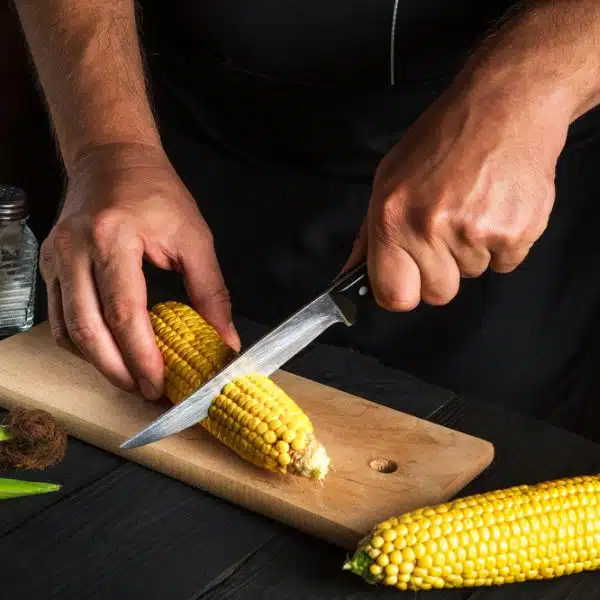
Corn is a pretty durable vegetable from the get-go – after all, it comes with its own protective covering in the form of a husk. As long as you leave that husk on and the corn you bought was fresh, to begin with, then it should last in the pantry for up to 7 days and still taste fresh and delicious when you cook it.
With cooked corn dishes, in most cases, you’re still looking at 3 to 4 days stored in the refrigerator before you’ll have to worry about them going bad. Additions to the recipe such as creams and butter won’t really factor in so much in the fridge, although some ingredients with cooked corn dishes may not freeze as well as others.
Most often, however, when it comes to leftovers, most folks are dealing with separated corn kernels or corn on the cob, and these will be stored in plastic containers or in foil and keep the corn fresh and tasty for the next 3 to 4 days.
There are definitely some tricks that you can use to ‘hack’ this a little, so let’s look at those and you can see if you find one that you like!
What are the best methods for storing corn?
Hands-down, vacuum sealing will get the most mileage out of cooked or raw corn and we’ll talk about that a little later in this section. In order to cover the subject of storing without going overboard, we’ll focus on these particular categories:
- Refrigeration tricks and hacks
- Freezing your corn properly
- Vacuum sealing corn for maximum shelf-life
- The perks of pickling your corn
We’ll tell you a little about each option, including some quick step-by-step instructions for some useful techniques, and how long you can expect these tricks to make your corn last. Let’s take a look and you can see what you think!
Refrigeration tricks and hacks
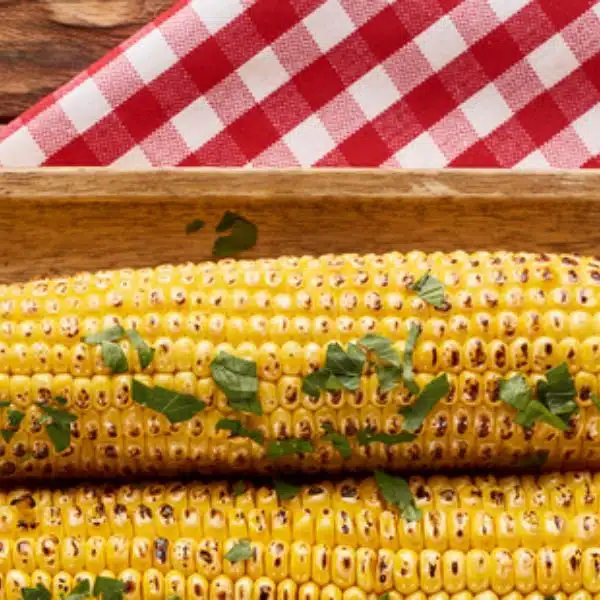
When refrigerating corn, most people will simply use a resealable plastic dish or Ziploc baggie, and these are great for storing corn for 3 to 4 days that doesn’t still have its husk. If you are storing away fresh corn that still has the husk, though, there’s a neat little trick you can use to store it for up to 7 days.
What you’ll need is a large Ziploc bag and a brown paper bag, and the following steps:
- Wet your brown paper bag with a little cold water and then gently squeeze it out, being careful not to tear the bag. Gently open it and insert 1 to 3 pieces of husked corn inside of it.
- Open up your Ziploc baggie carefully push your corn-filled damp bag inside of the Ziploc, and squeeze out as much of the air as you can before sealing it.
- Pop your Ziploc into the refrigerator and your raw corn should stay fresh for up to a week.
While you could simply bag the husked corn on its own, the damp bag helps to keep the corn moist while it’s in the refrigerator, which in turn makes it taste better when it’s time to cook it. The husk will keep the corn from drying out a little on its own, but we’re giving it a helping hand with the wet paper bag.
Aside from this method, the longest refrigeration option that you can use is vacuum sealing – vacuum-sealed corn may last up to 6 months in the refrigerator, but we’ll talk a little more about that in the ‘vacuum sealing’ section shortly to follow.
Freezing your corn properly
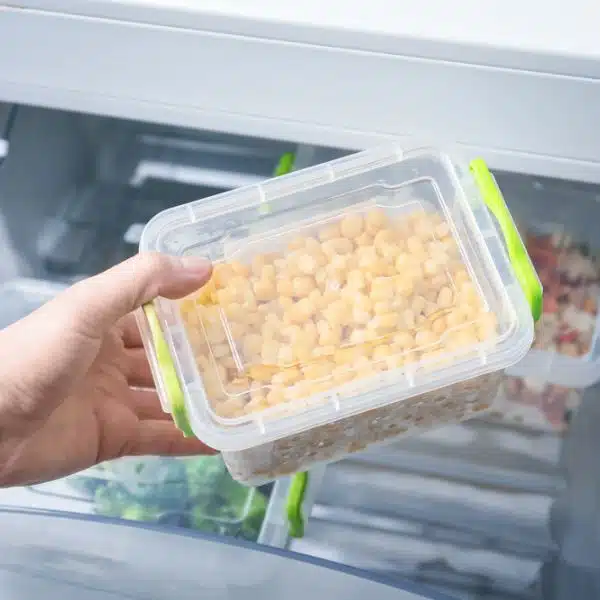
If you are freezing cooked corn, the best approach is simply putting it into resealable plastic containers – such as Tupperware or Ziplock baggies – and then writing the date on it and storing it away. They’ll be yummy for up to 3 months, although you can technically store them for up to 6 – the corn will be fine, but probably taste a little bland if you wait this long.
With fresh corn, however, you can remove the husks and blanch it and this will allow you to seal it in plastic and it should stay flavorful for that full 6 months. Here is what you’ll need to do:
- For blanching, you’re going to need to fill a large pot with water and start bringing that to a boil. While it’s heating up, get a large bowl and add in plenty of ice and water to make an ‘ice bath’ for our corn later.
- Go ahead and shuck your corn, removing the base and pulling off any husk and silk material.
- Once the water is boiling, add in your corn using some kitchen tongs and we’ll want to boil it for 5 minutes only.
- Using your tongs again, take the corn out and transfer it over to the ice bath. This will immediately stop the cooking process and it will also help to lock in important nutrients and that fresh flavor for your corn.
- Dry your corn with paper towels or a clean kitchen towel and then transfer the pieces to a baking sheet that you’ve lined with a little parchment paper.
- Stick the baking sheet in your freezer and let it stay there until your corn has frozen solid- the length of time depends on your refrigerator, but it’s typically around the 2-hour mark.
- Transfer your frozen corn into Ziplock bags, carefully squeezing out as much air as you can. Writing the date in marker on top and they’re ready to store away in the freezer for the next 6 months!
Vacuum sealing corn for maximum shelf-life
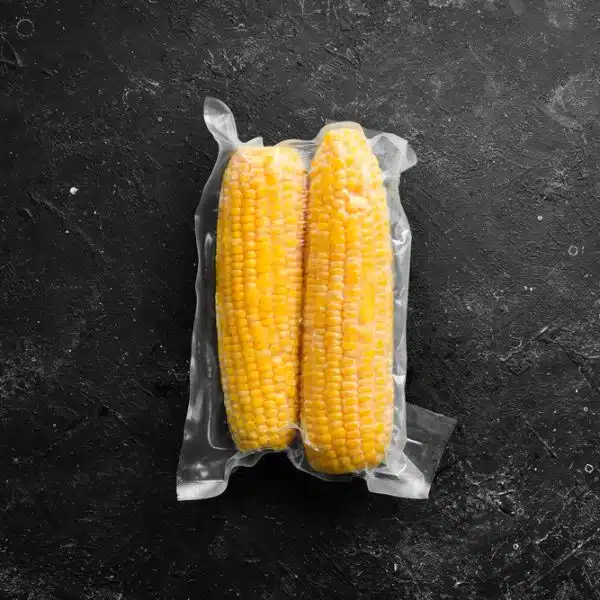
If you’ve got a vacuum sealer, then you should really try using it with your corn if you haven’t already. If you don’t have one, they’re fairly inexpensive – this NutriChef PKVS being a nice example – and with corn, you can get 6 months of storage life in the refrigerator and up to 12 months in the freezer.
Aside from this, you can also vacuum seal meats, prepare lunch portions, and seal up favorite sauces – there really are lots of uses for these clever machines.
Now, if you would like to vacuum seal corn to store it in the refrigerator or freezer, all that you will need to do is use these simple steps:
- Get a large pot for boiling, along with a large bowl filled with ice and a little water, and start the heat on the pot and begin shucking your corn – remove the inedible end, as well as the husk and cornsilk.
- Using tong, place your corn in the boiling water to boil it for 5 minutes, before transferring it to your ice bath.
- Dry the corn with a kitchen towel or some paper towels, and then immediately vacuum seal it in the provided bags and it’s ready to store in your refrigerator for up to 6 months or your freezer for up to 12!
The blanching really makes an incredible difference in the taste, but you’ll see that soon for yourself if you give this technique a try!
The perks of pickling your corn
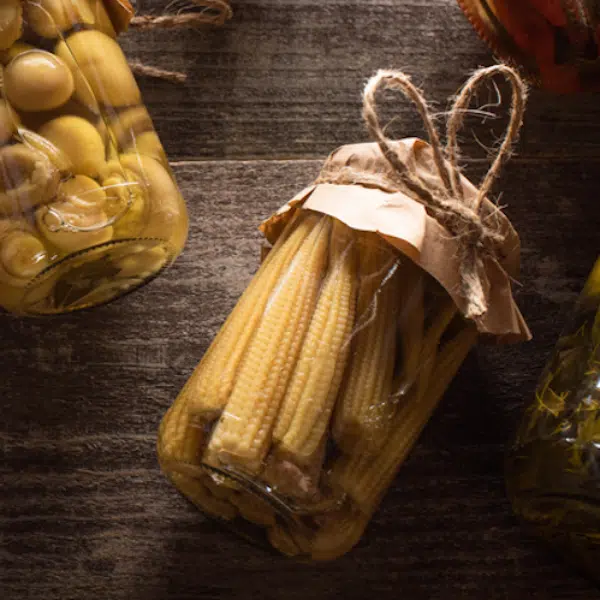
One final method of preserving your corn that we thought we would share today is pickling it!
Pickled with a bit of vinegar and peppers, your corn makes for an excellent spicy snack that’s good for you and doesn’t skimp on delicious flavors. This recipe for pickling corn comes from Amanda Phillips and Taste of Home and just 4 medium-sized ears of corn will make you 16 servings.
You’ll need a saucepan and some sealable jars and here’s the full ingredient list and the steps so that you can try it for yourself at home!
Pickled Corn
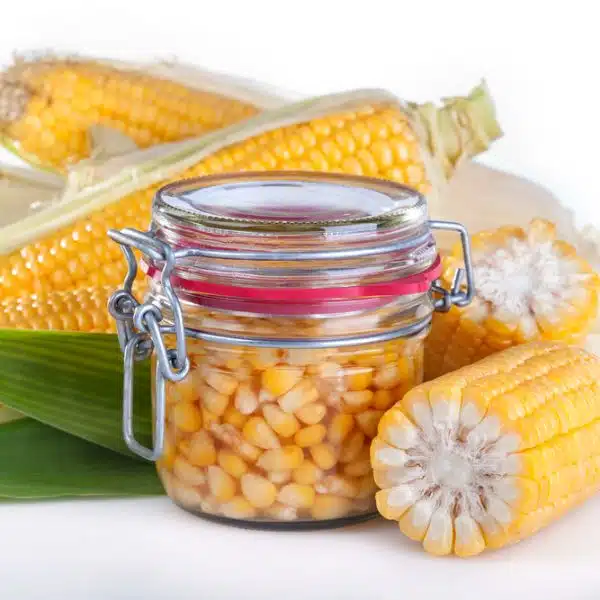
Ingredients:
- 4 medium ears of sweet corn (husked)
- 1/4 cup sugar
- 1/2 cup water
- 1 cup white vinegar
- 2 garlic cloves, thinly sliced
- 1 pinch crushed red pepper flakes
- 1 tsp salt
- 1/2 tsp coarsely ground pepper
Steps:
- In a large bowl, start stripping the corn from the cobs until you’ve removed all of the kernels.
- Get a saucepan and add in your garlic, salt, pepper, pepper flakes, sugar, vinegar, and water. Turn on the heat and bring it to a boil, then immediately reduce the heat for a covered simmer of 1 to 2 minutes – just until the sugar dissolves.
- Pour your saucepan mixture into your corn, mix it well, and let it cool. At this point, you can either cover and refrigerate it for 2 hours to serve immediately, or you can put it in your sealable jars (or a similar airtight container) and your pickled corn will stay yummy for up to 2 months in the fridge!
How can you tell if corn has gone bad?
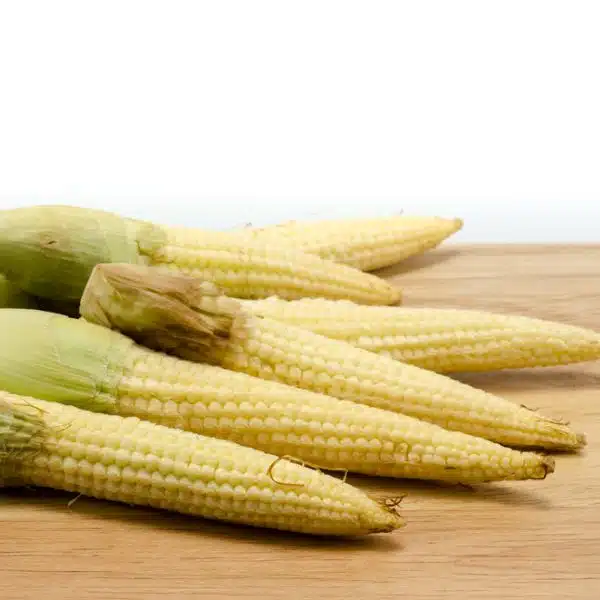
With raw corn, it is a whole lot easier to tell if it’s bad when compared to the cooked variety. It’s fair – after all, we mix a lot of things with corn, and that adds more factors to deal with – but there are some specific signs that you can keep a lookout for:
- Texture – Corn kernels should be firm and crisp, even if they’ve been boiled a little. If it seems softened or especially if the texture is a bit slimy, then it’s time to throw it out!
- Scent – Any changes to the smell are a bad sign and it’s recommended that you throw your corn away in such cases. Corn has a distinctive smell all its own, but if it smells somewhat earthy or even slightly rancid, then it’s time to get rid of it and look for another snack.
- Discoloration – Corn should be bright and yellow (unless you’re eating a colorful maize), so if you notice any changes in color, it’s best not to risk eating it.
Worms or little black mushrooms
If you are dealing with raw corn and you find a worm, you can actually cut out the affected area and the corn is still good. What you are seeing is called a ‘corn earworm’, and they sneak into crops from time to time, but they won’t harm the corn itself aside from that small, affected area.
We should also mention if you find something that looks like a little black mushroom, it’s not necessarily a bad thing. There is a mushroom-shaped fungus that grows on corn called Huitlacoche, and it is often eaten in Mexican cuisine. So, if you find one of these, Google Huitlacoche and verify what you’ve got – you may have just gotten a surprise, tasty treat!
FAQs
It’s almost time for us to conclude this article, but before we close up shop here we thought we’d share some frequently asked questions with you on the subject of corn and its shelf life. Let’s take a look and you can see if you find anything here that you can keep and use!
Can fresh, raw corn be left out overnight?
You certainly can, although it’s really best to eat fresh corn as soon as possible. The reason is that the natural sugars inside of the corn will slowly begin turning into starch, so the longer you wait to eat it, the less sweet it will be.
That said, if it’s in the husk, you can easily store it overnight with very little worry, although you should put it in a Ziploc bag for good measure and squeeze out as much air as you can for best results.
Why do you soak corn in salt water?
While it sounds like a preservation trick, soaking corn in salt water or in salt and sugar is actually something you can do before cooking it. This little trick is popular these days, as it helps to keep the corn moist while cooking and you get some very tasty results as a payoff for the extra time to soak them.
Is it better to freeze corn with or without husk?
It depends… if you are in a hurry and you’ve picked up too much corn at the store, then leave the husk on and freeze them and that husk will help to reduce the chances of freezer burn. If you’ve already husked it, then just blanch it and freeze it that way and you’ll lock in the flavor and nutrients quite nicely.
Some closing words on corn and it’s shelf life
Today we’ve answered the question ‘does corn go bad?’ and like any other vegetable, it certainly DOES.
Raw corn can last up to 7 days in its husk at room temperature, although keep in mind that the sugars inside are slowly converting to starch and you might lose a little sweetness. Refrigeration will also give you 7 days, but your corn will be a little sweeter for it so that’s usually your best bet.
With cooked corn, you can refrigerate it for 3 to 4 days and it should still taste yummy, and with freezing you can keep the corn tasting pretty close to its best for up to 3 months.
Finally, don’t forget that you can get 2 months out of pickled corn, and if you have a vacuum sealer, you can get 6 months of refrigerator shelf life or 12 months in the freezer – it really is the best quick method, so if you’ve got one then be sure to use it. It’s really convenient and your corn will still taste amazing.
Until next time, thanks so much for the visit, and we wish you and yours the very best!





David learned to cook at an early age after his mother told him that he couldn't live on pizza forever, Dave uses his modest kitchen skills to recreate sorely-missed recipes from home and to occasionally make new favorite ones from places he is visiting.